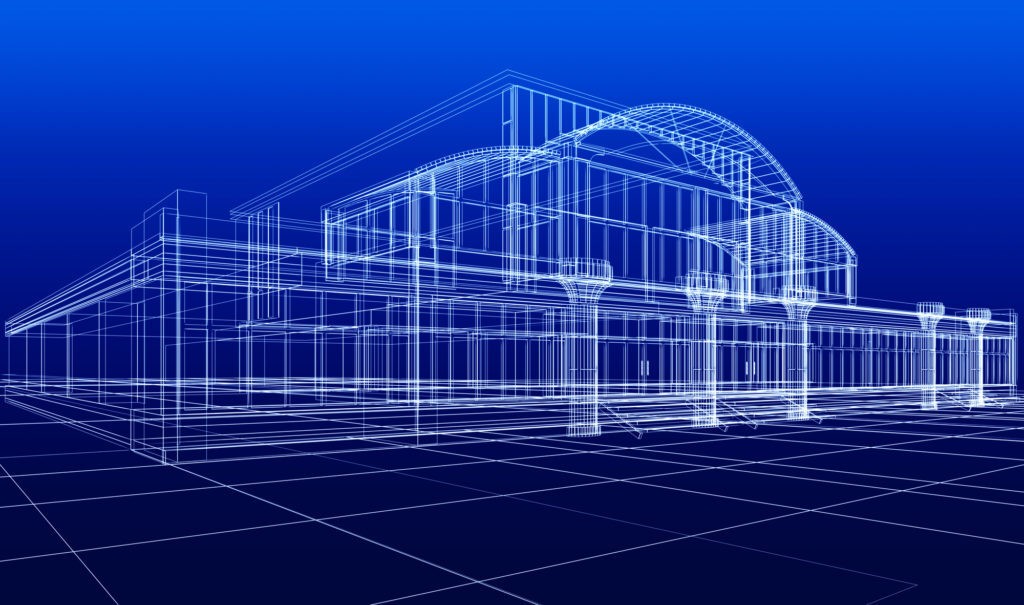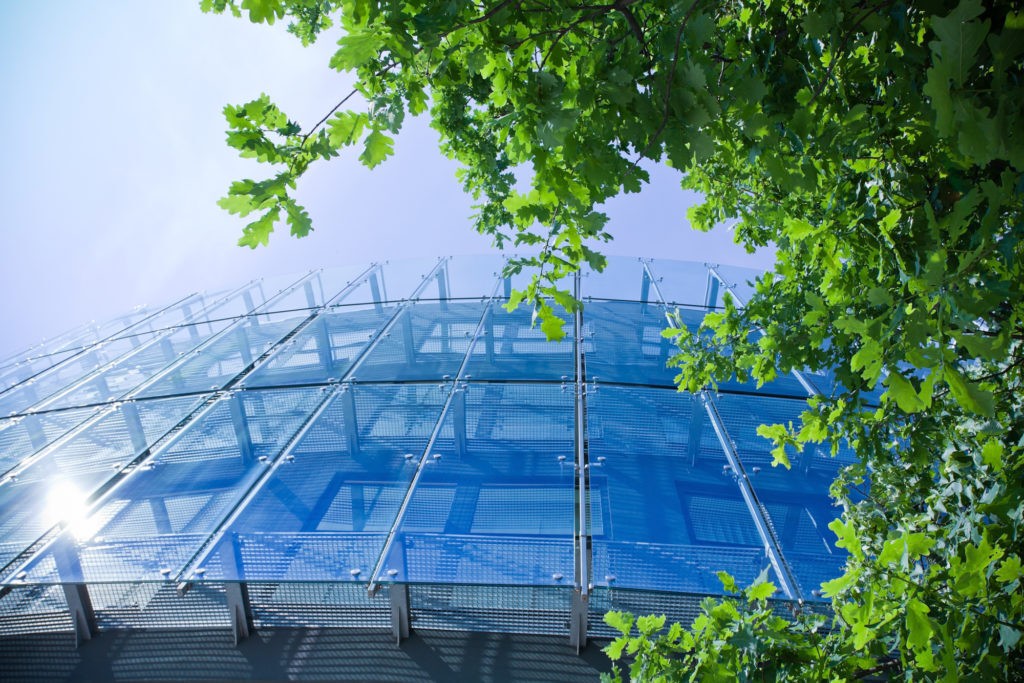Is there really such a thing as an environmentally sustainable building?
In truth, the vast majority of the U.S. population has very little exposure as to all of the elements involved in creating an environmentally sustainable building design. The basics — such as water conservation, recycling, and saving energy — are regularly promoted by utility providers and the media. But the concept of a design focused on seamlessly incorporating environmental sustainability into every aspect of a building is left to the architects and engineers of the world.
Defining Environmentally Sustainable Buildings
By definition, a sustainable or “green” building, according to the Office of the Federal Environmental Executive, is “the practice of 1) increasing the efficiency with which buildings and their sites use energy, water, and materials, and 2) reducing building impacts on human health and the environment, through better sitting, design, construction, operation, maintenance, and removal throughout the complete life cycle.”
The concept of that definition was conceptualized by the U.S. Green Building Council (USGBC) which worked with building designers, engineers, and government agencies during the 1990’s to develop the building rating system of LEED (Leadership in Energy and Environmental Design). Since the introduction of LEED in 1998, both commercial and residential design and construction have become more sustainable.
However, there was a problem. Both the design and construction of a typical office building that incorporated all of the LEED standards increased the front-end cost by about 10 percent. That construction cost increase was a significant hindrance for sustainable building design gaining mainstream acceptance. Only large corporations with a mission toward protecting the environment were accepting the challenge to build greener, sustainable buildings.
Environmentally Sustainable Buildings Today
Today, due to the over 16 years of design and construction experience and the greater availability of green products, that front-end cost percentage has significantly dropped to an average of five percent.
Part of the cost savings is the fact that contractors are avoiding expensive landfill fees through the use of energy and labor efficient automated equipment such as the General Kinematics FINGER-SCREEN™ vibratory separator along with their material classification machines, which help to recover and recycle construction waste. Construction and Demolition Waste Management Planning is a prerequisite requirement for the certification of a green building and worth two LEED points when performed.
More significant for green, sustainable building owners are the long-term operational cost savings in energy and water efficiency that more than make up the difference in up-front construction costs. In addition to the cost savings, green buildings also report an increase in worker productivity and occupant satisfaction.
Since the establishment of the USGBC’s LEED rating system, nearly 80,000 projects, including 32,500 commercial buildings across 162 countries, have been certified as sustainable. Not only are the developers of new construction projects embracing the idea of sustainability, but the owners of thousands of existing buildings have also taken extensive measures to retrofit and upgrade their structures and systems to modern sustainable standards.
For these innovative thinkers, the investments have paid off. Not only is the demand for green buildings higher (33 percent according to the latest real estate surveys), owners of green buildings reported that their ROI improved by 19.2 percent on average for existing building green projects and 9.9 percent on average for new projects. Higher than average rental fees and lower than average utility costs were the determining factors. Operating costs decreased by 13.6 percent for new construction and 8.5 percent for retrofitted existing buildings.
Driven by ever increasing energy and water costs, consumers are also beginning to look for greener homes, and home builders are answering the demand with green home developments. A 2015 study conducted by Dodge Data & Analytics, in partnership with the National Association of Homebuilders (NAHB) and with the support of Ply Gem Industries, a leading manufacturer of exterior building products in North America, found that, “Despite the headwinds created by growing concerns about the cost of building green, a high percentage of home builders and remodelers are already building green and expect to do so in the future.”
While home builders and remodelers report that consumers of all ages are interested in green, the study also finds that consumers age 55 and older are the most important group driving the current green market.
The 2015 study, Green and Healthier Homes: Engaging Consumers of All Ages in Sustainable Living SmartMarket Report, which surveyed 232 builders and remodelers from across the U.S., demonstrates that they recognize the benefits of green building:
- Over half (54 percent) of home builders are currently constructing at least 16 percent of their new homes green, and 39 percent of remodelers report that at least 16 percent of their remodeling projects are green.
- By 2020, nearly all (81 percent) home builders will be constructing that level of green, with over half (51 percent) building at least 60 percent of their new homes green.
- By 2020, remodelers report a similar level of growth, with nearly three quarters (74 percent) making at least 16 percent of their projects green, and over one-third (36 percent) completing over 60 percent of their projects green.
Even so, not all green buildings carry the familiar LEED Certification. There are many competing ‘green’ building standards including the International “Green” Building Code, WELL Certification, the California Green Code (CalGreen), and the dozens of community specific green codes all working toward the same sustainability goals.In fact, the words green and sustainable are quickly being replaced by the term “high performance” work and living spaces. A combination of architectural, mechanical, and electrical design combined with computerized artificial intelligence are being used to make large high-occupancy buildings energy and water efficient while maintaining a maximum comfort level for the occupants. These high-tech sensors automatically turn on and off lights, manage water use, and go beyond simply turning on or off the heat and air conditioning.
In fact, GK is currently in development of a new high-tech sensor monitoring system that will track the efficiency of your vibratory equipment. This proactive approach to monitoring your equipment is the future of energy efficient equipment design.
No matter what field or industry we work in, General Kinematics realizes that social responsibility starts with reduce-reuse-recycle. To learn more about the sustainable practices and equipment here at GK as well as how we are innovating new equipment to increase the recovery of resources, contact us today!








